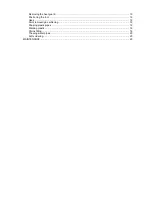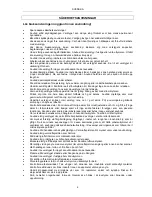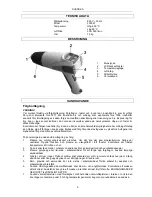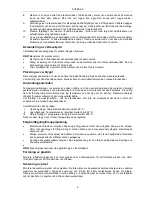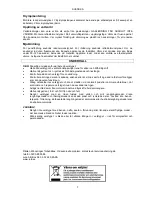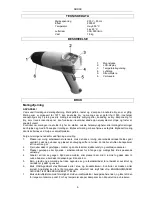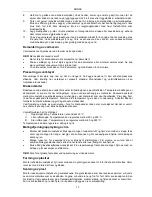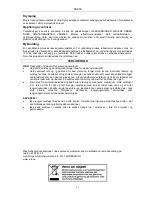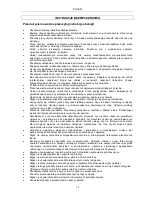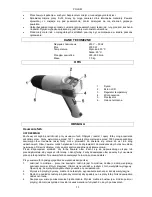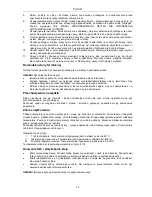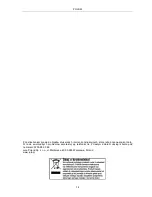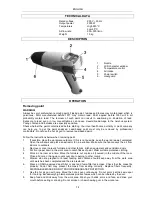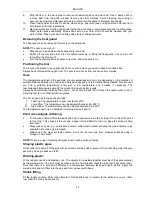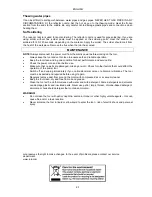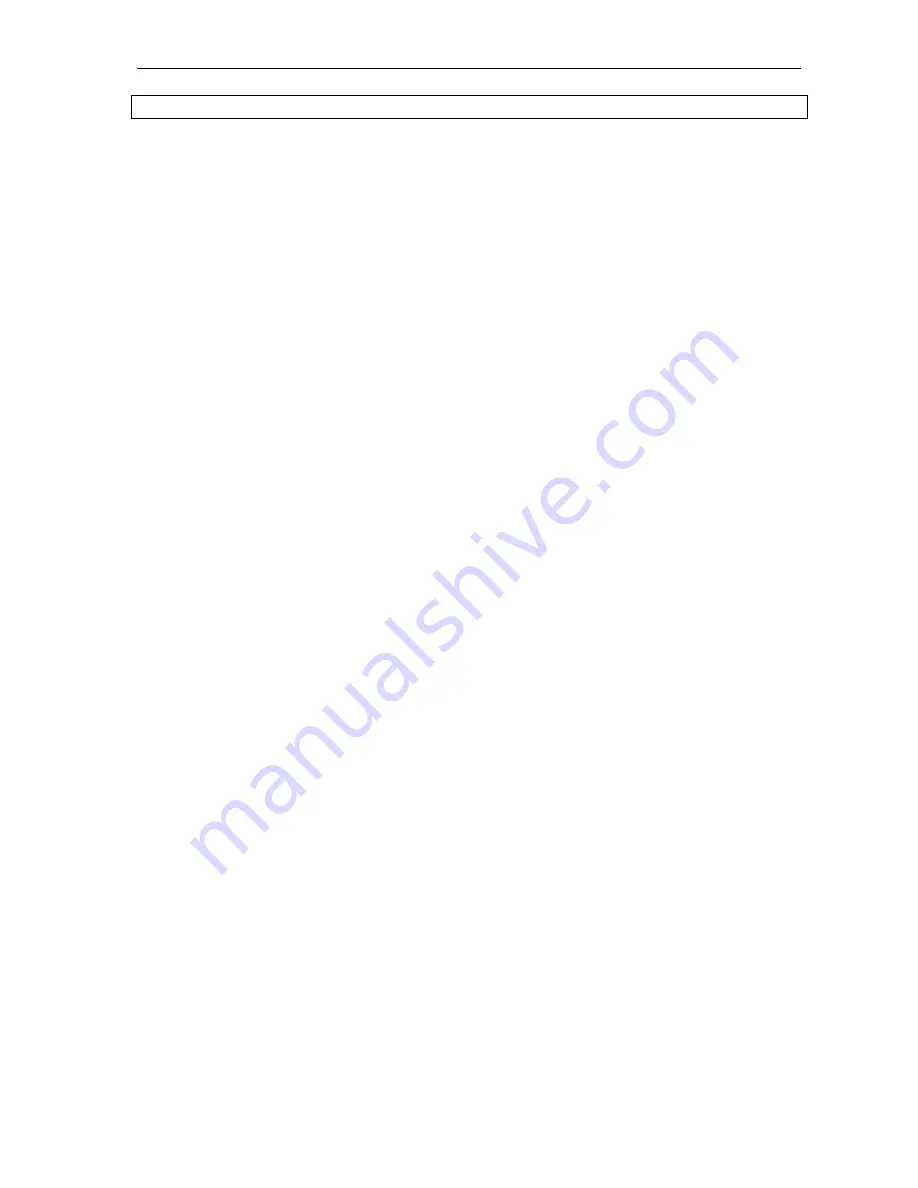
ENGLISH
17
ENGLI SH
SAFETY INSTRUCTIONS
Read the Operating Instructions carefully before use!
Save these safety instructions.
Always wear eye protection. The tool can eject objects that can cause permanent eye injuries.
Always wear eye protection when working. Normal glasses only have shock-resistant lenses.
Read these instructions before using the tool. Remember to use all necessary safety precautions
and common sense when working with power tools.
Read this handbook before using the tool. Familiarise yourself with the tool's capacity, limitations,
risks and functions.
Avoid dangerous operating conditions. Do not use power tools in damp or wet areas. Do not
expose power tools to rain. Make sure the work area is well lit.
Do not use power tools in the vicinity of flammable liquids or gases.
Keep the work area clean and well lit. Never work on a slippery floor.
Keep children and onlookers at a safe distance when using the tool. Keep the tool out of the reach
of children.
Use the tool only for its intended purpose.
Wear appropriate clothing. Do not wear loose-fitting clothing, gloves, ties, necklaces or jewellery
(rings, wristwatches). They can get caught in moving parts. Wear non-slip shoes and protection
and tie up long hair.
Wear a dust mask when working.
Always disconnect the power cord from the mains power before replacing parts, cleaning the
machine or carrying out adjustments or maintenance.
Avoid accidental starting. Make sure the power switch is in the OFF position before plugging in the
cord.
Check that no other tools have been left on the tool when switching it on.
Never leave the tool unattended when it is running. Switch it off with the switch.
Do not overreach. Always maintain a firm footing and good balance. Wear oil-resistant shoes with
rubber soles. Keep the floor free from oil, spillage and waste.
Maintain the tool correctly. Keep the tool clean and in good condition. Follow the instructions for
lubrication and replacement of accessories.
Check for damaged parts. Make sure that moving parts are properly adjusted and do not jam and
that no parts are incorrectly fitted or damaged. Check for other factors that could affect the
operation of the power tool. Damaged parts, or any other parts, must be repaired or replaced
before the tool is used.
Make your workshop childproof with padlocks and master switches. Always remove starter keys.
Never use the tool if you are tired or under the influence of drugs, alcohol or medication.
Always be very careful when removing paint. Flaking paint, residue and fumes may contain lead,
which is poisonous. You can reduce exposure to these chemicals by keeping the work area well
ventilated and using approved safety equipment, such as a breathing mask that filters out
microscopic particles.
Always wear protective gloves and eye protection. The hot air gun gets very hot when in use.
Never use the hot air gun as a hairdryer.
Never point the air flow at people or animals.
Never use it in the vicinity of flammable liquids or gases.
Never block the air flow by covering or blocking the air nozzle.
Never touch any surface with the nozzle when the hot air gun is running, or before it has cooled.
Keep the handles clean, dry and free from oil and grease.
Use the tool only for its intended purpose.
Always place the tool in an upright position, or suspended in its hanger.
Do not use the tool in damp or wet areas.
Never stick any objects in the nozzle on the hot air gun.
Store the machine in a dry and safe place, out of the reach of children.
Check the work area. The ceiling and walls etc. can contain highly flammable material. Always
check what is below the surface before applying heat.
Avoid body contact with earthed or grounded surfaces such as pipes, radiators, cookers and
refrigerators. There is an increased risk of electric shock if your body is earthed or grounded.
Small and/or irregularly shaped objects must be secured in a vice or clamps when heated.

